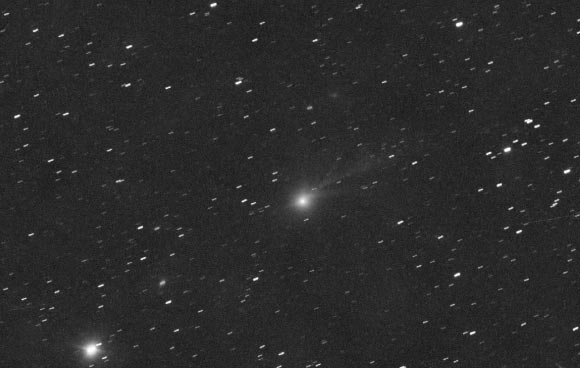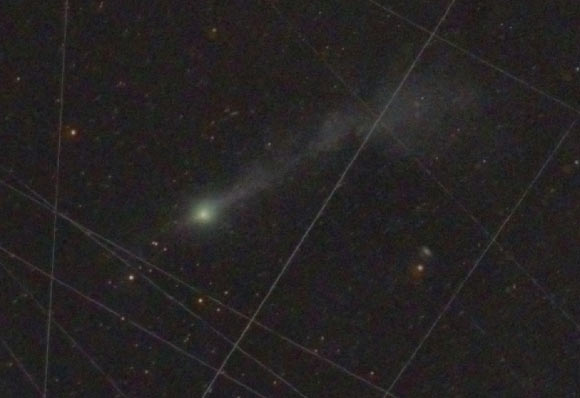Some of the latest images of 3I/ATLAS—the third confirmed interstellar object to pass through our Solar System, after 1I/Oumuamua and 2I/Borisov—show a complex multi-jet structure.
This 3I/ATLAS image was taken on October 31, 2025 by Lowell Observatory astronomer Qicheng Zhang. Image credit: Qicheng Zhang/Lowell Observatory.
3I/ATLAS was discovered by the NASA-funded ATLAS (Asteroid Terrestrial-impact Last Alert System) research telescope in Rio Hurtado, Chile on July 1, 2025.
Comet, also known as C/2025 N1 (ATLAS) and A11pl3Z, arrived from the side of the constellation Sagittarius.
Its designation as the most dynamically extreme object ever recorded is due to its hyperbolic orbit with exceptionally high eccentricity and extreme hyperbolic excess velocity.
3I/ATLAS reached its closest approach to the Sun, known as perihelion, on October 30, 2025.
The interstellar guest was at a distance of 1.4 AU. (astronomical units) or 210 million kilometers from the star – just inside the orbit of Mars.
At this point, the comet was moving at a maximum speed of about 68 km/s and was briefly hidden from ground-based telescopes due to its proximity to the Sun in the sky.
After perihelion, it became visible again in telescopes and will be visible until the end of December as it moves away from the Sun and Earth and back into interstellar space.
The first optical image of post-perihelion by 3I/ATLAS (see above) was captured On October 31, Lowell Observatory astronomer Qicheng Zhang uses the Discovery Telescope.

This 3I/ATLAS image was acquired on November 8, 2025 by astronomers from the ICQ Comet Observations team. Image credit: M. Jaeger / G. Rehmann / E. Prosperi.
November 8, a trio of astronomers from the ICQ Comet Observations group watched comet at a distance of 29 degrees from the Sun in the sky.
Their images revealed a complex jet structure consisting of at least seven jets, some of which are anti-tail jets.
“Given that a large number of jets appear in many directions, the reported non-gravitational acceleration of 3I/ATLAS requires much more than 10-20% of its original mass to be ejected near perihelion,” Harvard University professor Avi Loeb. said regarding ICQ images.
“Only a portion of this mass carries excess momentum in the preferred direction.”
“This means that the debris cloud around 3I/ATLAS should account for a significant portion of its original mass for a natural comet.”

This 3I/ATLAS image was taken on November 9, 2025 by astronomers at the British Astronomical Association. Image credit: Michael Buechner/Frank Nibling.
November 9, a duo of British Astronomical Association (BAA) astronomers watched comet using two telescopes.
Composite images of them showed a long “smoking” tail and two anti-tail engines.
“This multi-jet structure represents an exciting target for future observations with the Hubble and Webb telescopes as 3I/ATLAS makes its closest approach to Earth on December 19, 2025,” Professor Loeb. said about images of dietary supplements.
“Its minimum distance from Earth will be 269 million km, which is about a hundred times the extent of the jet structure in the images.”







